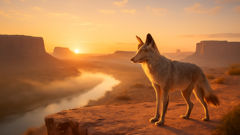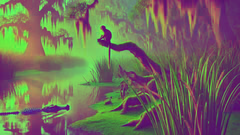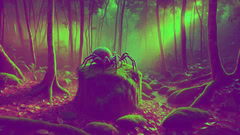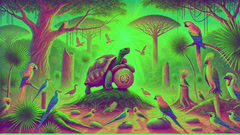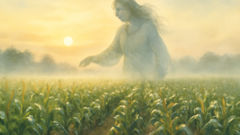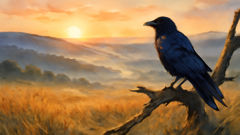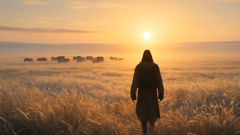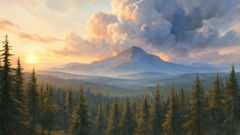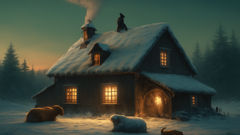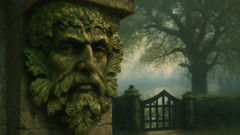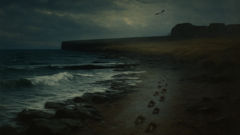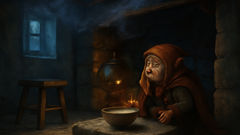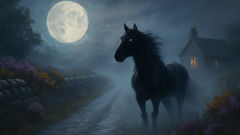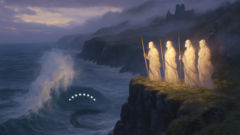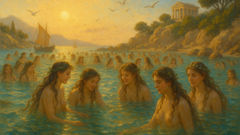Introduction
On a dusty, sun-bleached stretch of land where mesas draw thirsty heat from the horizon, a coyote with an easy grin and a mind full of stories begins to walk. He has learned that the world is listenable if you listen first, that a plan must be tested in the weather and the weather must tolerate the plan. He moves with a kindness that belies his mischief, a way of talking that makes even the wary creatures lean closer to hear the next word. These tales arrived over many seasons and many voices, stitched together by travelers who kept notebooks and note the way a joke becomes a warning and a warning becomes a path home. In the stories that follow, Coyote visits bustling trading posts and quiet river bends, barters with wind, bribes a snail to sleep, and persuades a hawk to lend him a glimpse of the land from above. He is clever enough to outwit a rattler and generous enough to return what he borrowed from a crow, though not always, because hijinks have their own timing. Yet the thread that holds these pages together is not merely laughter; it is the stubborn knowledge that wit without care can scorch the field, and courage without mercy can harden a heart. In every corner of the country—desert, prairie, forest, and town—humor and hardship share a table, and Coyote seats himself at the head, telling a story that makes the listening community lean in, both amused and awake. The reader is invited to wonder what it means to be clever in a world that is watchful and wondrous, to discover that wisdom sometimes comes disguised as foolishness, and that the right choice can start with a single, ridiculous idea that refuses to quit. The hijinks are not just antics; they are invitations to notice, to pause, and to decide what to carry forward when the dust settles.
The First Hijinks at the Watering Hole
The watering hole lay quiet as a whispered secret, a pool of glassy light where deer lifted their heads to listen to the wind and the old cottonwood trees clicked their dry branches like fingers counting seconds. Coyote came slipping in with paws soft as a rumor, tail high and curious, eyes bright with mischief and something like reverent awe for the way water refuses to hurry. At the far edge a vireo hummed, and beyond, a herd of antelope moved with that cautious grace that belongs to creatures who know a plan is always hanging in the air, forged or forgotten. The plan, as plans go with Coyote, began with a small, almost innocent idea: to teach a lesson about patience by pretending the water had a memory of the animals who thirsted there longer than any one could remember. He spoke in a voice that sounded like warm gravel shifting underfoot and the kind of smile that makes you forget you fear a trick until it is too late to stop smiling. He told the water, without words, that the dry season had made it forget the deer and the ant and the grasses and the tick of the sun on a patch of hills, and the water, who is wiser than most, decided to listen. The moment arrived when Coyote arranged a sequence of tiny, deliberate delays—first a leaf drifting on the surface of the pool that took a heartbeat to cross, then a ripple that glided the wrong way for a breath, then a cloud shadow that paused on a rock like a blackfish frozen in time. The animals, noticing the oddities, leaned closer together, not to see the plan unfold but to feel a shared pulse of expectation. Then the riddle became a small reward: a fish that leapt, a frog that croaked out a joke, a frog that joked back, a hummingbird that danced on a bead of dew and whispered that even water can be coaxed into telling a secret if you listen long enough. By the time the sun climbed higher and turned the pool to a bright coin, the animals found themselves drinking and laughing in equal measure, for the lesson was not just about patience but about the way a community gathers around a common thirst and makes a joke that strengthens ties rather than fractures them. Coyote, having sipped enough to loosen his own tongue, shared the punchline: the best trick is the one that leaves the water where it belongs, shared, and the best wit is the one that moves without hurting the neighbors. The hijinks closed with a bow of wind in the cottonwoods and a chorus of nuzzling noses, a reminder that cleverness without care leaves a wake of trouble; but when cleverness is yoked to generosity, even a drought can become a memory the land chooses to remember with gratitude. In the days that follow, tracks from this meeting line the dirt beside the watering hole as if the ground kept a diary of what was learned there: that humor can heal, that listening is a skill, and that a coyote’s word can be heavier than a stone if spoken with true intent.
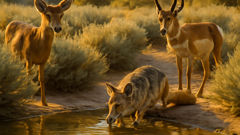
The Night the Fire Learned to Pace Itself
Night fell like a soft shawl folded over the world, and the fire woke, not with a roar but with a patient, patient crackle that did not hurry the stars. Coyote had stoked this particular hijink with a handful of dry sticks he had found in a forgotten corner of the canyon, where the rock walls absorbed heat and breathed it back at you in little stories. He whispered to the fire as one might to a bright dog that has learned to listen but not to reveal all its plans. The plan, such as it was, was to show the river that even a flame can learn restraint, to teach the heat to wait for a sign from the frost on the far bank when the air grows heavy with the smell of rain. He moved through the camp of a traveling gatherer, coaxing a stubborn wind to bend just so, turning the flame into a dancer who bows before the river and then leaps away, testing the line between hunger and patience. The night air carried the scent of mesquite and wet earth, of a world that holds its breath for a moment longer when it senses a trickster at work. In that breath, a lesson settled into the bones of the valley: power without tempo breeds fear, speed without a target becomes noise, and a wild heart can learn restraint if a little humor and a lot of listening are his guides. Coyote spoke in the language of spark and ash, and the animals—raven, badger, armadillo, and a lone cottontail—wove themselves into a chorus, a counterpoint to the flicker of flame. When dawn finally arrived with a pale pink edge at the horizon, the river moved with a careful patience that surprised even the usually thunderous fish. The hijink’s outcome was not punishment but a redistribution of fear: the camp learned to slow down, the wind learned to bend, and the fire learned to pace itself, until it could be fed not by haste but by intention. The lesson, like smoke rising toward light, drifted outward into the night and settled in the quiet among the pines: stop, look, listen, and let your cleverness serve the more patient, more generous plan of the land. In the long tail of that night, Coyote found that pacing himself is as brave as any sprint, and that a trick that checks its own impulse may be the bravest thing a trickster can do.
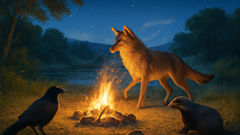
Moon Maps a Path for the River
The third tale arrives when the river wears a thin veil of ice and the moon hangs low enough to nearly touch the water. Coyote moves along the bank like a musician testing the strings of a fiddle, waiting for the river to sing a line he can borrow for a story. The night is generous here, a map laid out across the sky, stitched with constellations that look not unlike the old stories spoken by grandmothers with hands stained by berry juice and charcoal. In this chapter, his hijinks are not about tricks that steal breath but about tricks that give it back—tricks of listening, of moving with the current rather than against it, of offering a choice when none seems available. The river, patient and ancient, answers with a vow to reveal a path through the valley if the listener learns to hear the water’s cadence. Coyote learns to walk in step with the river’s rhyme, and in doing so he teaches the animals to read the night as if it were a book written in liquid light. The path is not a single line but a braided chorus of possibilities: a shallow bend that holds a winter fish, a fallen log that becomes a bridge for a fox and a crow to trade news, a floating leaf that rides the current like a boat with a small crew of beetles. Across this night of listening, Coyote discovers that a path can be created by many small decisions: a pause here, a nod there, a refusal to shout, a choice to share the map with those who would be left behind. The hijinks culminate not in a single gambit but in a covenant with the land, a quiet pact that when everyone grows a little wiser, the river learns to sing less for itself and more for the listening. By dawn, the valley holds its breath one last time as the moon slips away and the river glides along the new route, and the coyote, with a grin that knows both its own limits and its own gifts, allows the land to billow with the soft afterglow of a plan well played and a lesson well learned.
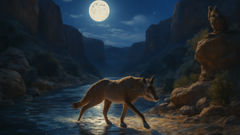
Conclusion
If you listen closely, the hijinks of Coyote do not end with a thunderous punchline but with a quiet, careful breath that settles the ground under the feet of the listener. These tales return again and again to the simple truth that wit without care costs more than it earns, that laughter can be a bridge between beings who would otherwise pass each other by, and that courage is most real when it is tempered by mercy and a willingness to learn. Across deserts, rivers, towns, and hedgerows, the Coyote’s stories keep wandering, inviting new ears to hear what the land has to say when the trickster becomes a teacher by accident and then by choice. In the final lesson, the world is reminded that cleverness gains nothing if it cannot sit with others and share the bounty of wit, the thrill of mischief, and the responsibility that comes with power. The hijinks leave behind footprints in dust and memory in breath, and those footprints become a map for anyone who wants to walk through life with a lighter step, a sharper eye, and a heart big enough to forgive a joke that went too far—and big enough to thank a laugh that finally brought everyone home.

